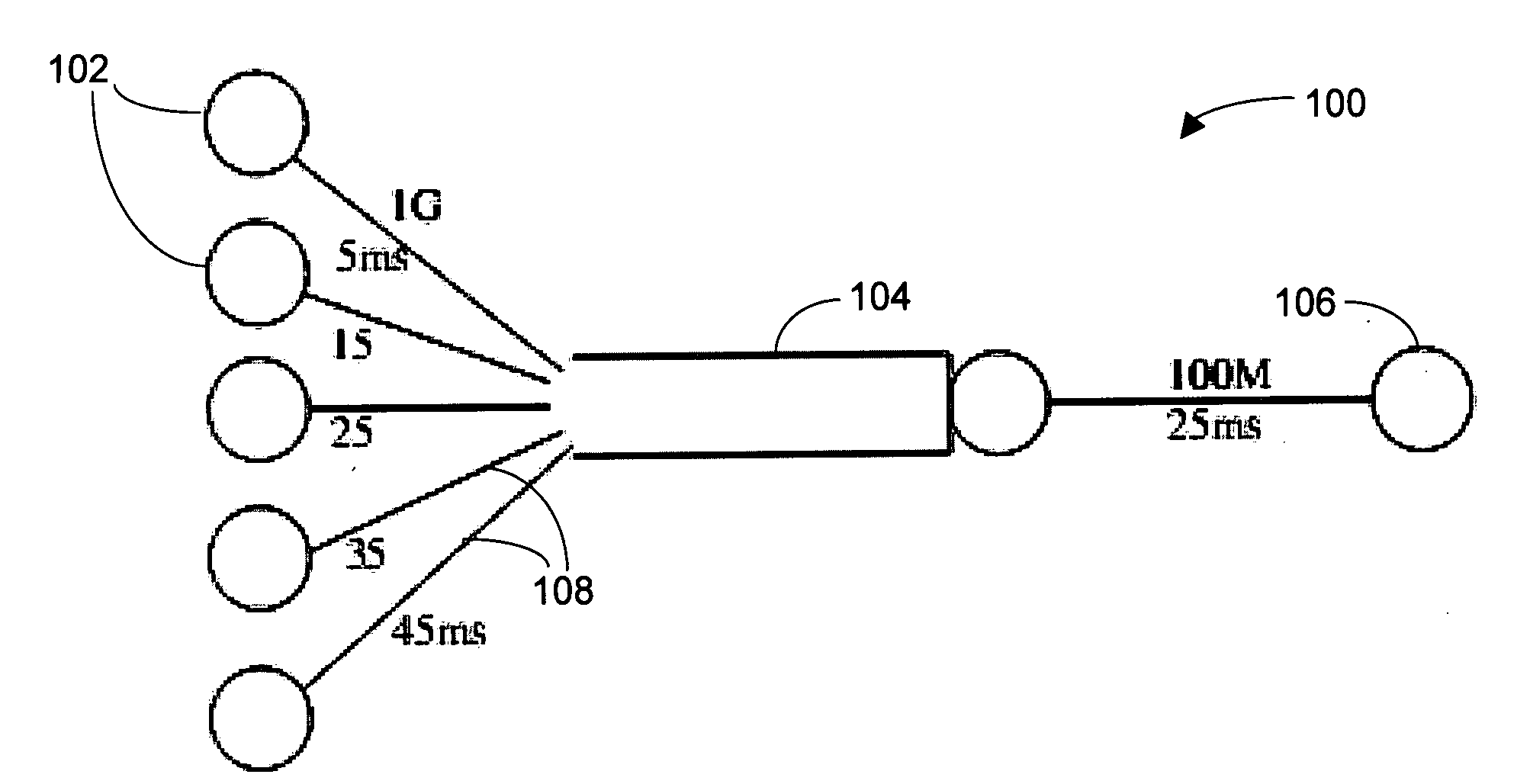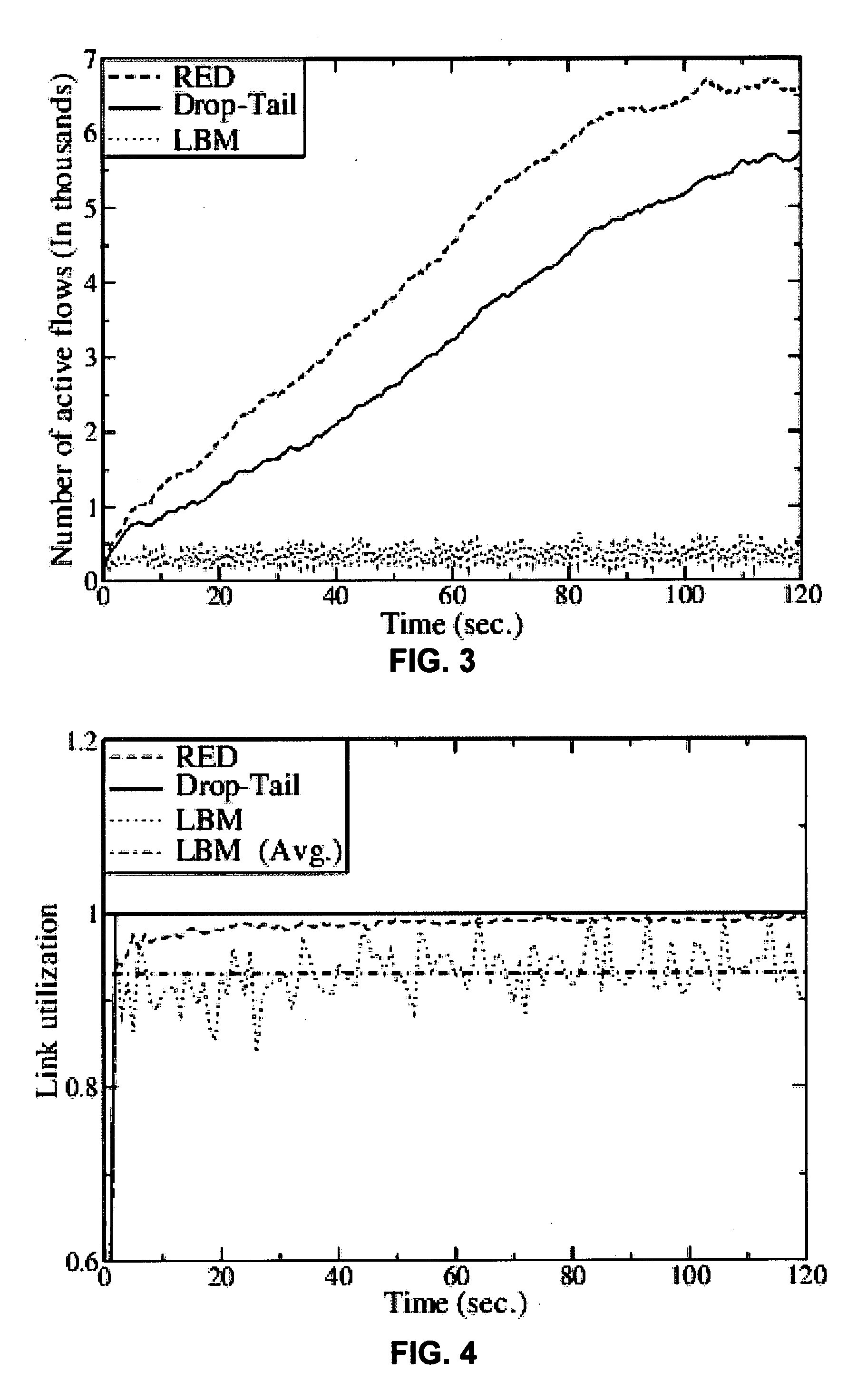Lightweight bandwidth-management scheme for elastic traffic
a bandwidth management and elastic traffic technology, applied in the field of networks, can solve the problems of difficult direct estimation of this quantity, the number of flows traversing the bottlenecked link can grow unbounded, etc., and achieve the effects of improving service quality, preventing the number of flows, and stabilizing an otherwise overloaded network
- Summary
- Abstract
- Description
- Claims
- Application Information
AI Technical Summary
Benefits of technology
Problems solved by technology
Method used
Image
Examples
Embodiment Construction
[0036]The present invention provides, in various embodiments, a Lightweight Bandwidth-Management (LBM) scheme that can be used to obtain both (i) an estimate of the number of active flows at a node in a network, and (ii) the probabilistic acceptance of a new flow request, which is inversely proportional to the number of active flows.
[0037]A known algorithm for estimating the number of active flows in a network is the Stabilized Random Early Detection (SRED) scheme proposed by Ott et al., “SRED: Stabilized RED,” in Proceedings of IEEE INFOCOM, April 1999, incorporated herein by reference. The SRED scheme maintains a list of recently-seen flows and estimates the number of active flows by computing the hit probability, i.e., the probability that a newly-arriving (or “incoming”) packet is part of an existing flow in that list.
[0038]In an LBM scheme consistent with certain embodiments of the present invention, the number of active flows is estimated by examining whether a newly-arriving ...
PUM
 Login to View More
Login to View More Abstract
Description
Claims
Application Information
 Login to View More
Login to View More - R&D
- Intellectual Property
- Life Sciences
- Materials
- Tech Scout
- Unparalleled Data Quality
- Higher Quality Content
- 60% Fewer Hallucinations
Browse by: Latest US Patents, China's latest patents, Technical Efficacy Thesaurus, Application Domain, Technology Topic, Popular Technical Reports.
© 2025 PatSnap. All rights reserved.Legal|Privacy policy|Modern Slavery Act Transparency Statement|Sitemap|About US| Contact US: help@patsnap.com



